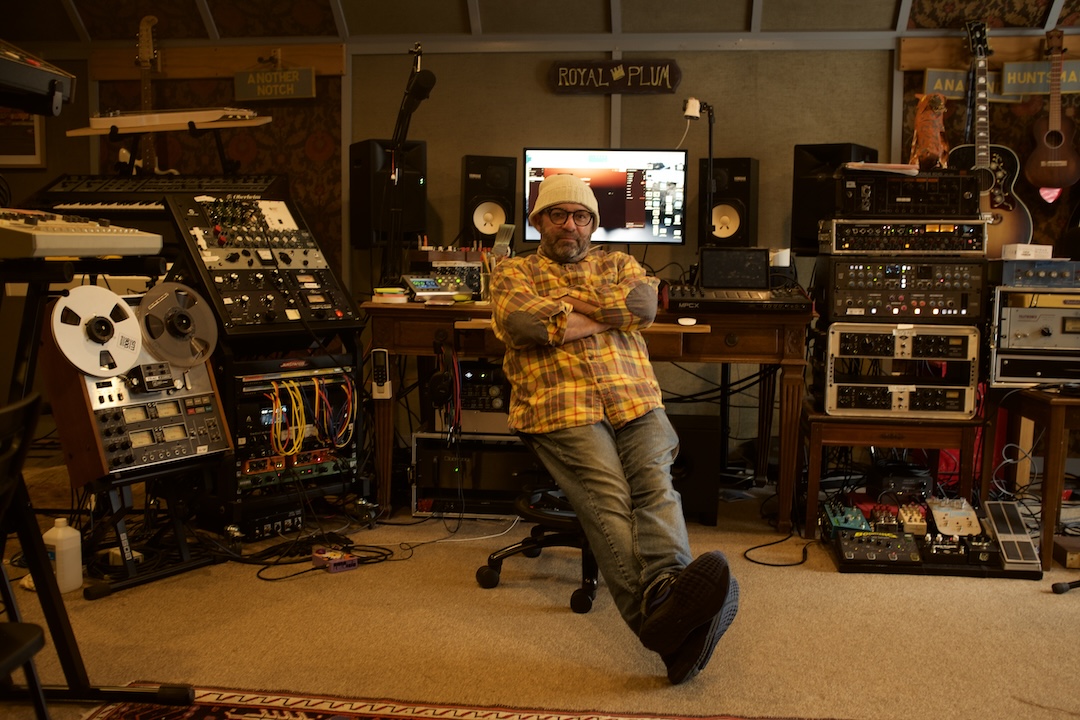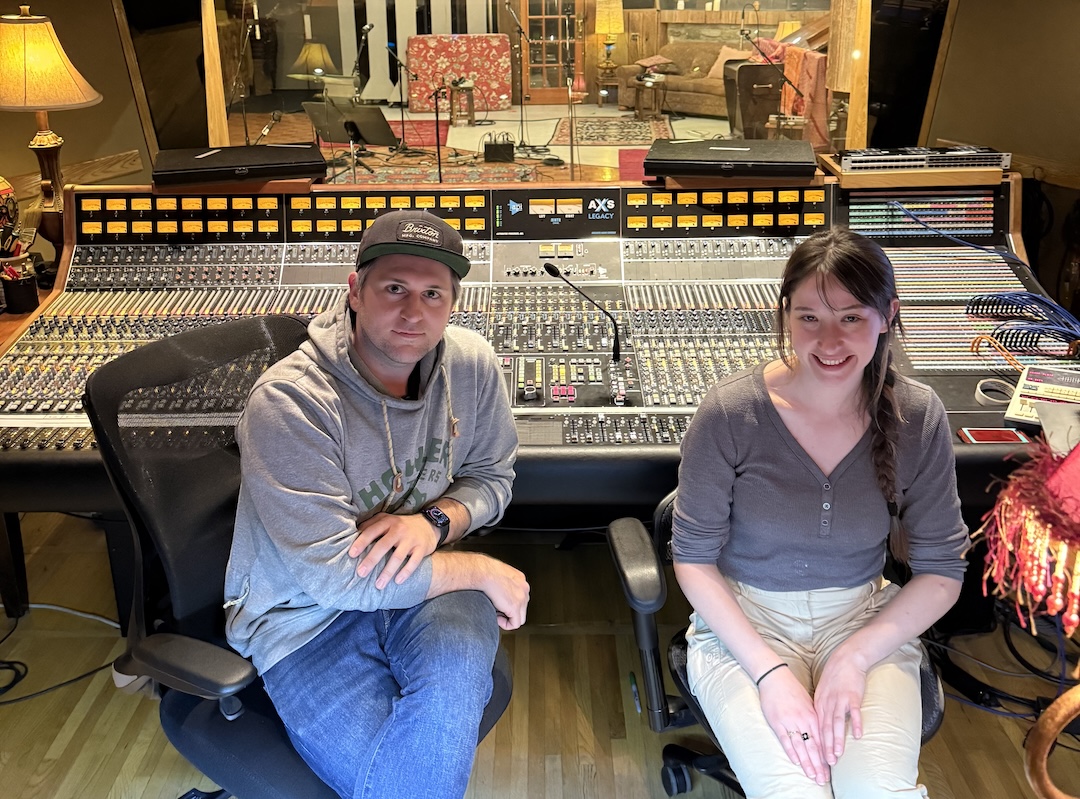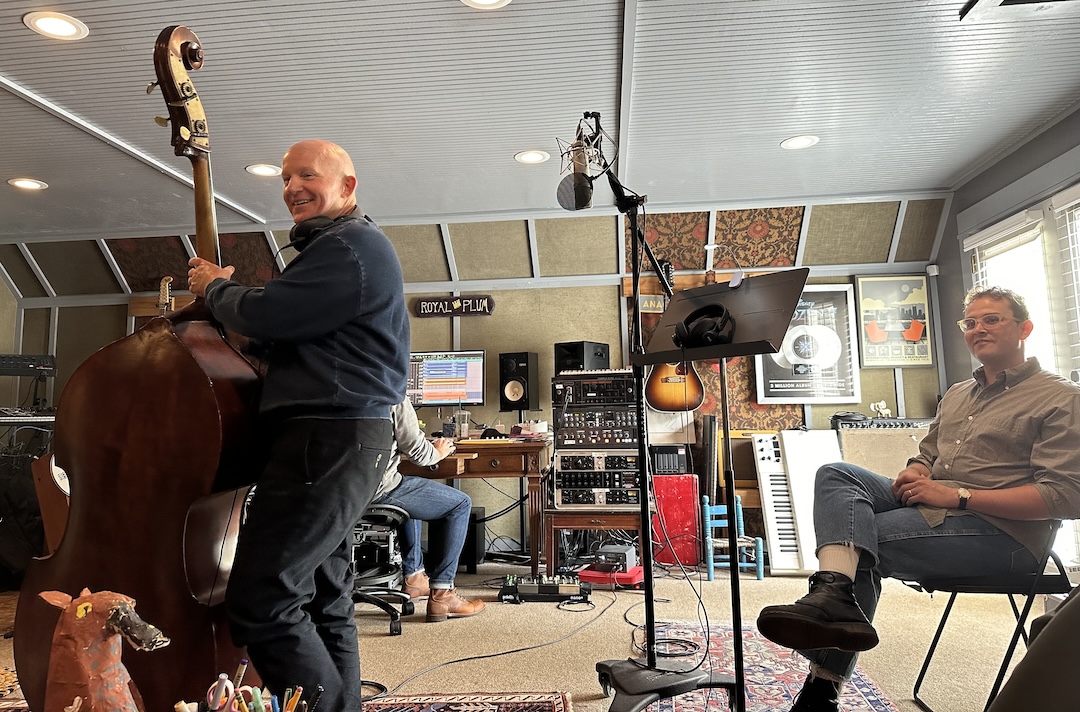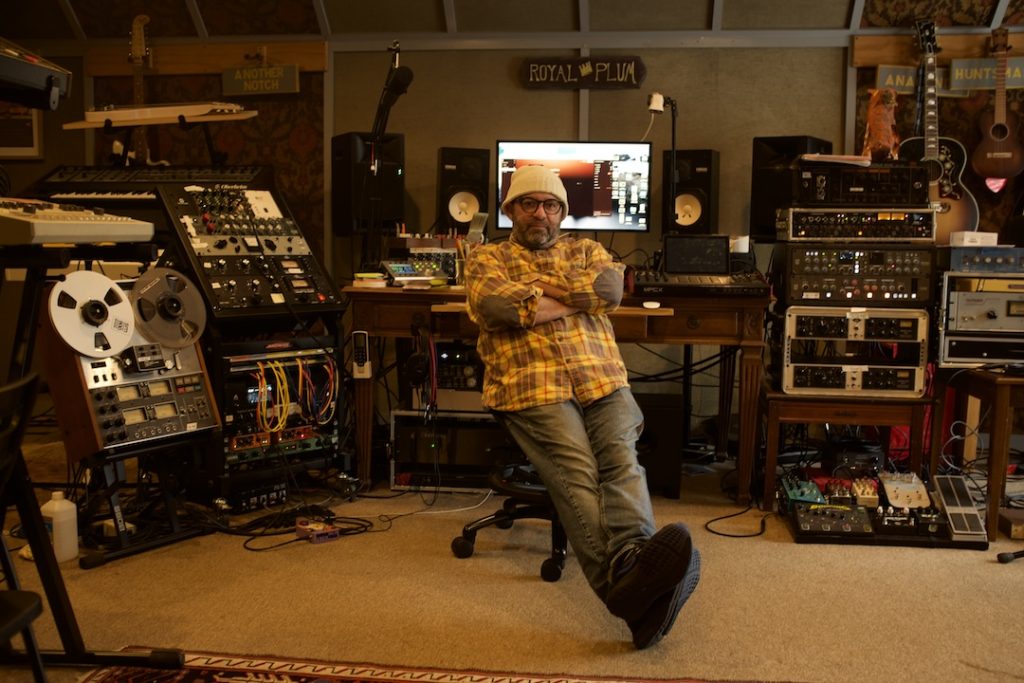Don’t Pass Up Part 1!
In 1996, Daniel Tashian was a young artist in his late teens, signed to Elektra Records. The label suggested he work with “this guy, T Bone Burnett,” he recalls, to produce his new album, Sweetie. “I had listened to his Elvis Costello album, Spike, and I loved the Counting Crows album he had produced, August and Everything After. We met, and I liked him immediately. He was very kind and creative, and he seemed to speak in metaphors, and I like that about him. I knew he was an artist himself.” The feeling was mutual. “Daniel is a great writer,” T Bone states. “I love everything about the way he makes music.”

The two would see each other on occasion, Daniel visiting T Bone at the Sound Emporium, down the street from Daniel’s home (and studio), while the producer was crafting the O Brother, Where Art Thou? Soundtrack in early 1999. “T Bone didn’t have a big footprint in Nashville until just a few years ago. He came back in 2020 and was working on something with DJ Premier and Elvis Costello,” recording as “Dopamine,” “and he asked me to come down to the studio. I went there, and I was so impressed. They were doing this long, epic rap-sung poem about America. It was so interesting, and I just thought, ‘Man, this guy is always being creative and adventurous in everything he does.’ A bit later, I texted him, wanting to hear his new album, The Invisible Light: Spells. I came over, and he played it for me, and I told him, ‘This is incredible—you’re at the top of your game.’ And he said, ‘Well, I just wake up every day and I write songs. So let’s write one.’”
T Bone sent him a lyric he had been thinking about: “I went over to the piano, and started to fiddle on some chords. I sent him a voice memo, and he said, ‘I love this. Why don’t you come over, and we’ll finish it.’ We did—and that became ‘Look Up.’” Adds T Bone, “That was the first song Daniel and I wrote together for the album. I remember thinking, ‘Ringo doesn’t want to do any dark music, so let’s do something extremely positive.’ I love the phrase ‘look up.’” It was especially poignant for Daniel. “In the middle of writing, it, he got a call that one of his friends had killed himself—and that ended up in the song. ‘Live to fight another day. Good things are gonna come your way.’ I think that’s part of the power of that song, is that we went through that while we were writing it.”
The second song the pair wrote began with Daniel offering the seeds of a song he had begun with friend Paul Kennerly, which became “Time on My Hands.” “I showed him that, and T Bone wrote some of the verses. And we just started having fun writing.”
“String Theory,” T Bone notes, “was something I was working on. The theory is that all things we see are the notes of strings, vibrating beneath them. So, in that way, everything we see is made of music—and we’re made of music.” Notes Daniel, “He’s just a very thoughtful and interesting lyricist. He sent that lyric over to me, and I just started to tinker around with it,” ending up focusing on the electric 12-string. “I was thinking about some of the things The Byrds got into, and that’s why the 12-string is in there. They were country fans—an Americana kind of group, so that’s what I was trying to do with the music on that track.”
Key to writing songs for Ringo, T Bone explains, “We were writing in his key. Bruce had told me his range, and one of the things I learned from Roy Orbison is, when Orbison would write a song, he would start on his lowest note, and he would end up on his highest note. So I worked that way with Ringo. I knew his lowest note and his highest, which Bruce had given me, and then I just tried to write in that sweet spot of his tone.”
Other titles soon appeared, Daniel notes. “These songs were just coming to him. He was just on fire with creativity and imagination. They just sort of accumulated over the course of a few months.” These included the rocking opener, “Breathless,” “Can You Hear Me Call” and the wonderful “Rosetta,” a tribute to the rock guitar pioneer Sister Rosetta Tharpe.
“Ringo told me years ago that he had seen Rosetta Tharpe at The Cavern Club,” the producer states. “She and Maybelle Carter were the two great progenitors of rock and roll and country guitar, respectively—both women. So that was something that stuck with me, and I thought, ‘Well, I’ll write a song for Rosetta.’”
In addition to writing songs for Ringo, T Bone notes, “After starting this with Ringo, it got me into such a writing mode that I wrote a whole ’nother record,” resulting in his own album, The Other Side, which arrived a few months after Look Up’s release. “We did them back-to-back,” states Michael Piersante.
After enough songs had accumulated, Daniel recalls, “T Bone told me, ‘I’m thinking some of these might be good for Ringo. I just talked to him, and he might want to make a country EP. And I think some of these things we’ve been working on would be good for that project. Would you come over and lay down some tracks with me?’ So I said, ‘Sure, I’ll be right down.’ And I grabbed my J-200 and headed to the studio, and we started putting these work tapes together.”
It was around this time that T Bone asked Mike Stankiewicz to help out on the project, to track demos of the nine songs that were ready, to send to Ringo to hear. “I grew up a drummer—that was my principal instrument in college,” the engineer states. “I knew I wanted to study record production and engineering. But I grew up a lifelong fan of Ringo’s. Some of my first CDs I ever had as a young kid were The Beatles, so I’ve been listening to him most of my life. And, certainly, working on a record for a Beatle was not on my career Bingo card!”

His approach, he notes, “is just be in the room, but try to stay out of the way, and get them what they need, performance-wise. Just make sure the vibe is right. I feel like an engineer is far from the most important person in the room. Just read the room and stay out of the way, make sure stuff’s working and it’s being recorded properly.”
The demos were recorded in November and December 2023, starting over at Billy Swan’s small studio (recording “You Want Some” on November 28), and moving on to both Daniel’s studio and Sound Emporium. “The core was just T Bone, Daniel and Dennis Crouch,” with the former two placing acoustic or electric guitars, and Crouch providing the backbone with his upright bass. He was tracked using a Mojave Audio MA-37 condenser mic, passed through a Universal Audio 6176 channel strip.
“Dennis is the most solid bass player I know,” says T Bone. “I brought Dennis in here, because I knew that all Ringo would have to do is just listen to Dennis. Because Dennis lays down the law, and plays with tremendous feel. He’s a country musician, but he plays very black—more black than most bluegrass bass players do. Most bluegrass players play on top, always leaning forward, and the songs are going a little faster all the time. Dennis plays back in a Motown place—he’s the closest bass player I know to Willie Dixon—so it gave Ringo that deep, solid pocket to sit in.”
Crouch is not only a big Paul McCartney fan (“I’ve been robbing his things for a lot of years,” he says), but also an enormous fan of Ringo’s Beaucoups of Blues album, and of its classic country upright bassist, Junior Husky and drummer Buddy Harmon. For his approach here, he says, “I went in thinking about that record, a lot. I thought, ‘Man, that’s where that groove lives. And if I can create somewhere between Junior Husky and Paul McCartney, Ringo will do everything else.’” His own notes, he says, “are sort of like what a bass drum would do, anyway. So I went in thinking, ‘If I put this right from back to the center of the beat, that’s gonna give him all the room.’ That way, Ringo’s got the full quarter note.”

Because the demos were recorded without Ringo present for him to play off, as a true rhythm section, Crouch did what Ringo himself does with his drumming, letting the lyrics drive his playing, either from T Bone’s or Daniel’s guide vocal or from the lyric sheet taped to his music stand. “I would think about what he’s going to play, based on the lyric. I want to think I know where his heart was beating. But the lyric is always going to dictate. If you’ve got a strong lyric, it will dictate where it needs to go. And, after hearing Ringo’s parts, I could hear he reacted to what I had played.”
No drummer—and not even a click track—was ever present. “I never use a click track,” T Bone states. “But I will do a loop. And always low, a low loop, like a thump, for us to play with when doing the demos, just to keep things in some sort of overdubbable state. Cause if you put down just a solid bass and guitar part, when he’s adding drums, the drums have a good basis to start from. It frees the drummer up. In The Beatles, it was Ringo that laid down a part that freed up The Beatles to play—we did the opposite of that. We laid down a solid thing for him to play with.”
Either he or Daniel would also record a guide vocal for each, Daniel, for instance, on “Look Up” and T Bone on “Never Let Me Go,” the latter just him singing and playing, alone, at Electromagnetic East, while Daniel did the same for T Bone’s “Time On My Hands” at his own studio. “Ringo was actually very complimentary of my singing, which I loved,” Daniel relates. “He said, ‘You’re the guy who sang the demo vocals You set the bar really high.’ I told him, ‘Yeah, well, you exceeded it, Ringo,’ which he certainly did. When I heard his final vocals, it was so amazing to hear. Because he’s got such a commanding sound, and such an identifiable sound. I was, like, ‘Well, that’s how that one goes.’”
While most were indeed simple guitar, vocal and bass recordings, “Rosetta,” one of the most popular songs on the album, got its start with a basic writing loop. “One morning,” T Bone recalls, “I was just playing a groove, so we started with just that, as a guitar groove, that we looped. And we built the rest of the song out of that.”

